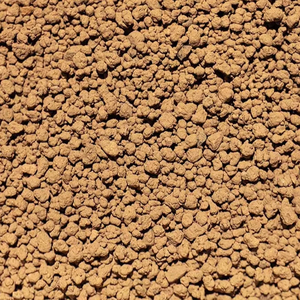
All categories
Featured selections
Trade Assurance
Buyer Central
Help Center
Get the app
Become a supplier

(965 products available)














































Different types of aztec healing clay are available, depending on the user's needs. Some of the most common types include:
Choosing the right type of aztec clay for sale is not an easy task due to the availability of different types of clay on the market. Here are some factors to consider when buying in bulk.
Skin type and concerns
Determine the skin type and concerns if the clay will be used for facial masks. Green clay is good for oily and acne-prone skin because it controls excess sebum production. This clay also tightens pores and provides a matte finish. On the other hand, pink clay is suitable for dry and sensitive skin. It balances hydration and gives the skin a youthful glow.
Purity and quality
Always choose aztec clay that is pure and of high quality. The best clay is free from additives and chemicals. It should also be harvested and processed properly to retain its natural properties. The purity of the clay determines its effectiveness in treating skin and health problems.
Origin and source
Aztec clay is named after the origin location. French green clay is sourced from France, while bentonite clay comes from Mount Mazama in the United States. Knowing the origin and source of the clay helps determine its quality and purity.
Type of packaging
The type of packaging protects the clay from moisture and other contaminants. Clay stored in a sealed plastic container is safe from moisture. Moisture can make the clay lose its beneficial properties. Some manufacturers package clay in resealable bags. These bags are also suitable for personal use.
Brand reputation
Always buy clay from reputable brands and manufacturers. Well-known brands have established credibility in producing quality clay. Also, read the reviews to see the experiences of other customers who have used the product.
Price and value
When buying aztec clay in bulk, it is important to consider the price and value. Different brands and manufacturers sell their clay at different prices. While searching for clay that offers good value for money, avoid choosing low-quality clay because of its cheap price. Quality clay may be expensive, but it lasts for a long time and delivers excellent results.
There are various ways to use the Aztec healing clay. For one, it can be used as a face mask. When used as a face mask, users should ensure that the clay is mixed with equal parts of water or apple cider vinegar. It is then applied to the face after a thin layer has been applied, and it is left to dry for about 5 to 10 minutes. Once dried, it is rinsed with warm water. Users should note that it should not be left for too long, as this can cause skin dryness.
It can also be used as a hair mask. When used as a hair mask, it is mixed with water in a bowl until it forms a paste. The mixture is then applied to the hair and scalp, focusing on areas prone to oil buildup. After about 30 minutes, the hair is rinsed with warm water. This helps detoxify the scalp and reduce product buildup.
Another way the clay can be used is by adding it to bathwater. When added to bathwater, it is mixed with water to form a smooth paste and then spread all over the body. It helps draw out impurities and soothes the skin.
While the Aztec clay has numerous benefits when used on the skin and hair, it is important to note some precautions. For one, it should not be used on broken skin, as this can cause further irritation. It is also recommended that it be patch tested before use, as some people may be allergic to it. Users should also avoid using it with strong actives like retinol and glycolic acid, as this can cause skin irritation.
In addition, when mixing the clay, it is not advisable to use metal utensils, as this can affect the clay's properties. The clay should also not be inhaled, as this can cause respiratory issues. Lastly, individuals with pre-existing health conditions should consult a healthcare professional before use.
Absorbs Oil and Impurities:
One of the main functions of Aztec clay is its ability to absorb oil and impurities. When applied to the skin, the clay draws out excess sebum (oil) produced by the skin, which can help reduce shine and prevent clogged pores that lead to acne. It also pulls out impurities, dead skin cells, and toxins from the skin surface, leaving the skin cleaner.
Tightens Pores:
Aztec clay masks have a skin-tightening effect, which can help reduce the appearance of enlarged pores. As the clay dries on the face, it causes the skin to tighten and firm, temporarily reducing the size of pores. This can improve skin texture and give the complexion a smoother, more even look.
Balances Skin Tone:
Another function of Aztec clay is its ability to balance skin tone. The clay contains minerals like magnesium and calcium, which can help even out skin pigmentation. By reducing inflammation and controlling melanin production, Aztec clay may help lighten dark spots, acne scars, or uneven skin tone, resulting in a more uniform complexion.
Natural Ingredients:
Aztec clay is made from natural volcanic ash sourced from California, USA. It contains no synthetic chemicals, additives, or preservatives, making it 100% pure and safe for all skin types.
Nutrient-Rich Composition:
The mineral content in Aztec clay varies depending on the location it is harvested from. Commonly found minerals include calcium, magnesium, potassium, iron, sodium, and silica. Each mineral offers different skin benefits, such as detoxifying, exfoliating, hydrating, and rejuvenating.
Multiple Uses:
Aztec clay mask can be used in several ways. Apart from facial masks, it can also be applied on the body, underarms, hair, and even ingested as a detox drink. This makes it a versatile skincare product.
Eco-Friendly Design:
Being a natural product, Aztec clay packaging is often designed with sustainability in mind. Look for clays that come in reusable glass jars or recyclable plastic containers to reduce environmental impact.
Clear Labeling:
Packaging should have clear and concise labeling, including the clay's name, mineral composition, and any certifications (e.g., cruelty-free, vegan). Labels also provide information on the clay's origin and extraction method, which is important for consumers seeking transparency.
Sealed for Freshness:
Aztec clay benefits from being sealed for freshness to prevent contamination and maintain its purity. Look for products with tamper-proof seals or airtight closures to ensure the clay has not been exposed to air or bacteria.
Q1: What is Aztec clay good for?
A1: Aztec clay is said to have many benefits for the skin, such as providing a deep cleanse, removing toxins, and unclogging pores. It is also said to help improve the appearance of fine lines and wrinkles and reduce the look of scars and stretch marks.
Q2: What are some disadvantages of bentonite clay?
A2: Some disadvantages of bentonite clay may include its potential to absorb too much oil, resulting in dry or irritated skin. It may also interfere with the absorption of certain medications or supplements when taken orally, so it is essential to space out dosages appropriately.
Q3: Should Aztec clay be refrigerated?
A3: Aztec clay does not need to be refrigerated. It should be stored in a cool, dry place away from direct sunlight. Keeping it in the bathroom is fine, as long as it is stored properly when wet. Make sure the container is sealed tightly so moisture does not get inside, as this can cause the clay to dry out and reduce its effectiveness.
Q4: Does Aztec clay remove dark spots?
A4: While Aztec clay may not directly remove dark spots, it can improve skin tone and texture. The clay's exfoliating properties may help fade the appearance of dark spots over time by removing dead skin cells and promoting the growth of new, smoother skin. For more targeted treatment of dark spots, consider using gentle exfoliation, vitamin C serums, or chemical peels in addition to clay masks.
Q5: How long does Aztec clay last?
A5: Aztec clay has a long shelf life due to its natural properties and ability to absorb impurities. It can last up to three years or more when stored properly in an airtight container away from moisture and humidity. Always check the color and texture before use, but it typically remains effective for a long time due to its lack of active ingredients that would cause it to expire.